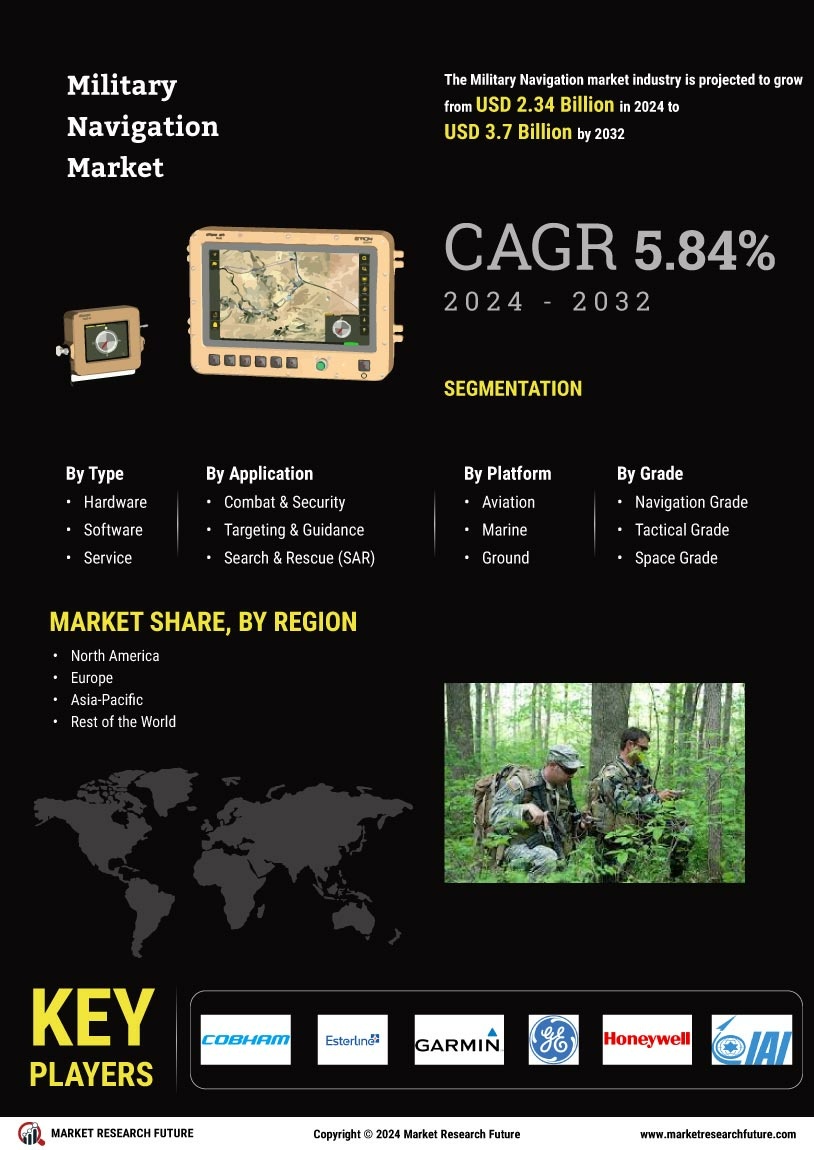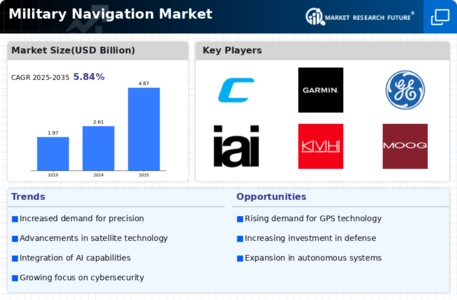North America : Market Leader in Military Navigation
North America continues to lead the Military Navigation Market, holding a significant share of approximately 62.5% with a market size of $1300.0M. The region's growth is driven by increasing defense budgets, technological advancements, and a focus on enhancing military capabilities. Regulatory support from government initiatives further catalyzes demand for advanced navigation systems, ensuring operational efficiency and accuracy in military operations.
The United States is the primary contributor to this market, with key players like Lockheed Martin, Northrop Grumman, and Raytheon Technologies leading the charge. The competitive landscape is characterized by continuous innovation and strategic partnerships among these firms, ensuring that North America remains at the forefront of military navigation technology. The presence of advanced research facilities and a skilled workforce further solidifies the region's dominance.
Europe : Emerging Hub for Defense Technology
Europe is witnessing a robust growth trajectory in the Military Navigation Market, with a market size of $800.0M, accounting for approximately 25% of the global share. The region's growth is fueled by increasing defense expenditures, collaborative defense initiatives among EU nations, and a rising focus on cybersecurity in military operations. Regulatory frameworks are evolving to support the integration of advanced navigation technologies, enhancing operational capabilities across member states.
Leading countries such as the UK, France, and Germany are at the forefront of this market, with key players like Thales Group and BAE Systems driving innovation. The competitive landscape is marked by strategic alliances and joint ventures aimed at developing cutting-edge navigation solutions. As European nations prioritize defense modernization, the demand for sophisticated military navigation systems is expected to rise significantly. "The European defense market is evolving rapidly, necessitating advanced navigation solutions to meet emerging threats."
Asia-Pacific : Growing Military Capabilities
The Asia-Pacific region is emerging as a significant player in the Military Navigation Market, with a market size of $400.0M, representing about 12.5% of the global share. The growth is driven by increasing military budgets, geopolitical tensions, and a focus on enhancing defense capabilities. Countries in this region are investing heavily in modernizing their military infrastructure, which includes advanced navigation systems to improve operational effectiveness and situational awareness.
Key players in this market include major defense contractors from countries like India, Japan, and Australia. The competitive landscape is characterized by a mix of domestic and international firms, with companies like Leonardo and Harris Corporation expanding their presence. As nations prioritize defense spending, the demand for innovative military navigation solutions is expected to grow, positioning Asia-Pacific as a critical market for future developments.
Middle East and Africa : Emerging Defense Market
The Middle East and Africa region is gradually developing its Military Navigation Market, with a market size of $108.54M, accounting for approximately 3.3% of the global share. The growth is primarily driven by increasing defense budgets, regional conflicts, and a focus on enhancing military capabilities. Governments are investing in advanced navigation technologies to improve operational efficiency and effectiveness in military operations, supported by various regulatory initiatives aimed at modernizing defense systems.
Countries like the UAE and South Africa are leading the charge in this market, with a growing presence of key players such as General Dynamics and L3 Technologies. The competitive landscape is evolving, with both local and international firms vying for market share. As the region continues to prioritize defense modernization, the demand for military navigation solutions is expected to rise significantly, making it a key area for future investment.

















Leave a Comment